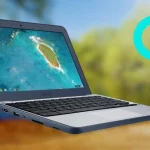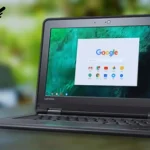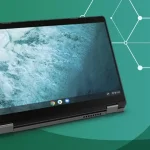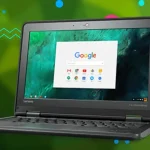Chromebooks don’t have a “Ctrl + Alt + Delete” version like Windows computers do. On a Chromebook, though, there are different ways to do the same things or get to the Task Manager.
Chromebooks aren’t like standard Windows computers in that they don’t have a “Ctrl + Alt + Delete” button that opens the Task Manager or closes apps that aren’t responding. Instead, Chrome OS gives you different ways to do similar things. This introductory text looks at different things Chromebook users can do when they need to manage running processes or deal with apps that won’t respond. These ways include using the Chrome OS Task Manager, which you can get to by pressing “Shift + Esc,” using the “Search + Esc” shortcut to open the Task Manager right away, and using “Lock” to log out or close down apps that are causing trouble. Also, the text will stress how important it is to stay up-to-date on Chrome OS features, since they can change over time and it’s important to check official documents for the most up-to-date information. Chromebook users can easily handle their system and fix problems with how it works if they know how to use these alternative methods.
Here are some ways out:
Solution 1: Using the Chrome OS Task Manager
1. Press “Shift + Esc”:
When you hit “Shift” and “Esc” together on most Chromebooks, the Chrome OS Task Manager will open. This will let you see a list of all open tabs and tasks, just like the Windows Task Manager.
2. End a task or tab:
Once the Task Manager is open, you can click the “End process” button next to a task or tab to stop it.

Solution 2: Using the “Search + Esc” shortcut
1. Press “Search + Esc”:
On a Chromebook, the “Search” key looks like a magnifying glass and is usually where the “Caps Lock” key is on a normal computer.
2. Task Manager shortcut:
When you press “Search + Esc,” the Chrome OS Task Manager starts right away. You don’t have to go through the browser to get to it.
Solution 3: Using the “Lock” feature
Even though it’s not exactly the same as “Ctrl + Alt + Delete,” the “Lock” function lets you log out or close apps or extensions that aren’t working.
1. Press “Search + L”:
When you press “Search” and “L” at the same time, your Chromebook’s screen will stop.
2. Use “Powerwash” (reset) if necessary:
If the problem keeps happening and your Chromebook doesn’t respond, you can do a “Powerwash” to return it to the way it was when it was new. This is the same as reinstalling the Windows working system.

Some Frequently Asked Questions(FAQs):
Where is the delete key on a Chromebook?
Ans:
Most Chromebooks don’t have a traditional “Delete” key like you would find on a normal Windows keyboard. Instead, Chromebooks have a key called “Backspace” that does more than one thing. When you press the “Backspace” key, it can be both a “Backspace” key and a “Delete” key, based on the situation.
Here’s how it works:
“Backspace” function:
Press the “Backspace” key to get rid of characters to the left of the pointer. This is similar to how the “Backspace” key on most computers works.
“Delete” function:
Hold down the “Alt” key and then press the “Backspace” key to remove characters to the right of the cursor. This is called “forward deletion.” This set of letters and numbers is the “Delete” method.

How to do Ctrl Alt f2 on Chromebook?
Ans:
Chromebooks don’t have a straight keyboard shortcut like “Ctrl + Alt + F2” that lets you open the terminal or a virtual console. Chrome OS is made to be simple and easy to use, and the graphical user interface (GUI) gives you access to most of its features.
But you can use the following option to get to the Chrome OS developer shell (Crosh), which has some limited command-line functions:
Press “Ctrl + Alt + T”: This will open a Crosh shell tab in the Chrome browser.
What Does Alt F4 Do on Chromebook?
Ans:
When you press “Alt + F4” on a Chromebook, the following things happen:
No specific action:
If you press “Alt + F4” in the Chrome OS setting, it won’t do anything specific.
Application-specific shortcuts:
Some web apps or browser add-ons may have their own keyboard keys that use “Alt + F4” for specific tasks. But these shortcuts would be added by the makers of those apps; they are not a part of Chrome OS as a whole.
Function keys in Chrome OS:
The function keys (F1–F12) on Chromebooks may be set up to do special things by default. For example, the “F4” key on a Chromebook keyboard is usually used to control windows, like making some apps go into full-screen mode or getting out of full-screen mode in others.

What is Ctrl Shift F5 on a Chromebook?
Ans:
“Ctrl + Shift + F5” could do different things based on the web page or web app you are using. Some web apps or extensions may use this keyboard shortcut to do certain things in their layout. As an example:
Reloading a page:
“Ctrl + Shift + F5” may be used in some web apps or extensions to force-refresh or reload the current page, skipping the cache and getting the most recent information.
Custom actions:
Web developers and extension makers sometimes set up keyboard shortcuts like “Ctrl + Shift + F5” to do certain things in their apps, like open a certain feature or change some settings.

How do I control Alt Delete without Delete key?
Ans:
If your keyboard doesn’t have a “Delete” key, you can still do things like “Ctrl + Alt + Delete” on a Windows machine by using other key combinations or methods on a Chromebook. Here are some ideas:
Ctrl + Alt + Backspace:
“Ctrl + Alt + Backspace” can be used on some Chromebooks to do the same thing as “Ctrl + Alt + Delete.” This combination will log you out of your current experience right away, which can help if something isn’t working right.
Using the Chrome OS Task Manager:
Chrome OS has a “Task Manager” that works like the “Task Manager” in Windows. Depending on the type of your Chromebook, you can get to it by pressing “Shift + Esc” or “Search + Esc.” The Task Manager lets you see what’s going on and control what’s going on.
Powerwash:
If your Chromebook keeps having problems and none of the above solutions work, you can do a “Powerwash” (factory restart) to put it back to the way it was when you first got it. This can help fix bugs with software.

External keyboard:
You can connect your Chromebook to an external computer if you have one. You might be able to do what you want by pressing “Ctrl + Alt” and a designated “Delete” key on the external keyboard.
Conclusion:
In the end, Chromebooks don’t have a “Ctrl+Alt+Delete” feature like Windows computers do. But there are other ways that users can get the same effects. Chromebooks don’t have a specific “Delete” key, but the “Backspace” key can be used to delete both backwards and forwards when the “Alt” key is pressed at the same time. Using “Shift + Esc” or “Search + Esc” to open the Chrome OS Task Manager lets users keep an eye on and control running tasks and tabs. Chrome OS is made to be easy to use and works mostly on the graphical user interface. However, advanced users can turn on Developer Mode and install Linux (Beta) to get a more traditional Linux terminal experience. It’s important to know about Chrome OS changes and keyboard shortcuts if you want to be as productive as possible and fix any problems that might come up.





